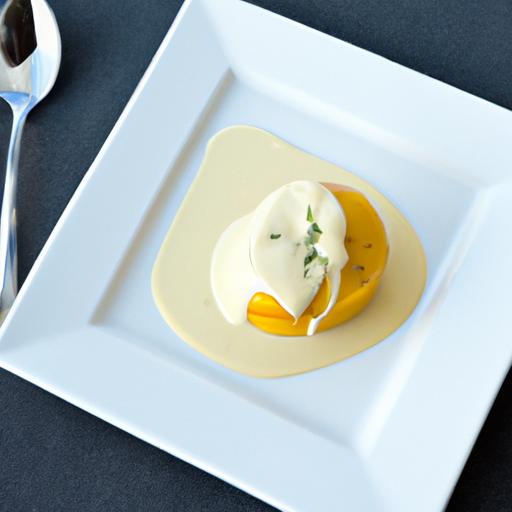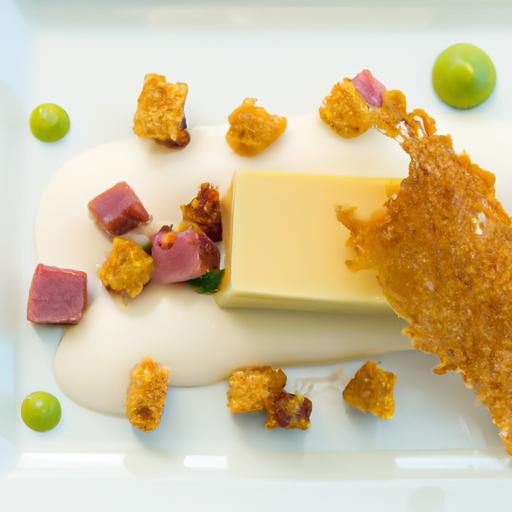Imagine sinking your teeth into a perfectly juicy, tender piece of chicken-its flavor bursting with layers of savory delight that dance on your palate. The secret behind this culinary magic often lies not just in the seasoning, but in the humble yet transformative power of the buttermilk brine. Beyond its tangy taste and creamy texture, buttermilk harbors a fascinating mix of enzymes, acids, and proteins that work in harmony to unlock flavors and elevate your cooking to new heights. In this article, we’ll dive deep into the science behind buttermilk brines, revealing how this age-old technique tenderizes meat, infuses it with moisture, and amplifies flavor in ways that might just revolutionize your kitchen game. Prepare to discover the delicious alchemy that turns everyday ingredients into extraordinary taste experiences.
Unlocking Flavor: The Science Behind Buttermilk Brines
Unlocking flavor through the magic of buttermilk brines transforms ordinary cuts of meat into irresistibly tender and savory delights. Rooted in traditional Southern cooking and beloved worldwide, this technique harnesses the natural acidity and enzymes in buttermilk to break down tough muscle fibers while marrying salt and spices in perfect harmony. The result? Juicy, flavorful meat that stands out in both texture and taste, invigorating your culinary repertoire.
Prep and Cook Time
- Preparation: 10 minutes
- Brining time: 8 to 24 hours (overnight preferred)
- Cooking time: 20 to 30 minutes (depending on meat cut)
Yield
- Serves 4 to 6 people, depending on portion size
Difficulty Level
- Medium
Ingredients
- 4 cups buttermilk (full-fat for richness)
- 1/4 cup kosher salt (key for moisture retention and seasoning)
- 2 tablespoons sugar (balances saltiness and enhances caramelization)
- 1 tablespoon black peppercorns, crushed
- 4 garlic cloves, smashed
- 2 tablespoons smoked paprika (adds depth and subtle smokiness)
- 1 teaspoon cayenne pepper (optional for heat)
- Fresh herbs: 4 sprigs thyme and 2 sprigs rosemary
- 2 pounds bone-in chicken thighs (or your preferred meat cut)
Instructions
- Prepare the brine: In a large mixing bowl, whisk together the buttermilk, kosher salt, and sugar until dissolved. Add the crushed black peppercorns, garlic, smoked paprika, cayenne, and fresh herbs. This complex mixture balances acidity and aromatics, tantalizing the meat.
- Submerge the meat: Place the chicken thighs into a large resealable plastic bag or non-reactive container. Pour the buttermilk brine over, ensuring each piece is fully covered.
- Seal and refrigerate: Remove excess air, seal tightly, and refrigerate for 8 to 24 hours. The lactic acid and enzymes in buttermilk gently tenderize while salt flavors permeate evenly over time.
- Remove and dry: After brining, take the meat out and discard the brine. Pat the pieces dry thoroughly with paper towels – this step is essential for achieving a crisp exterior when cooked.
- Season lightly: Because the brine provides a robust base, a light sprinkle of additional seasoning can be applied if desired.
- Cook to perfection: Grill, bake, or pan-fry the meat until the internal temperature hits the safe threshold (165°F/74°C for chicken). For best results, sear on medium-high heat to develop a golden-brown crust, then finish cooking through gently.
- Rest and serve: Let the meat rest for 5-10 minutes before slicing. This allows juices to redistribute, enhancing juiciness and flavor intensity.
Tips for Success
- Choose buttermilk wisely: Full-fat buttermilk carries the best enzymatic activity and flavor richness. Low-fat versions may yield less tender meat.
- Timing is crucial: Avoid under-brining for less tender results or over-brining which can lead to mushy textures.
- Salt balance: Kosher salt’s larger crystals dissolve evenly-table salt requires adjustment to avoid over-salting.
- Customize spice blends: Tailor peppers, herbs, and smoky elements to complement different regional palettes.
- Make ahead: You can prepare the brine a day in advance and pour it over fresh meat when ready to speed up prep time.
Serving Suggestions
Present your perfectly brined and cooked meat alongside vibrant sides that highlight its rich flavor. Roasted root vegetables, creamy mashed potatoes with chives, or a crisp green salad with vinaigrette cut through the richness delightfully. Garnish with fresh herbs like thyme or rosemary sprigs for an elegant touch. A drizzle of hot honey or tangy barbecue sauce can also enhance the mouthwatering experience.
| Nutrient | Per Serving (approx.) |
|---|---|
| Calories | 320 kcal |
| Protein | 28 g |
| Carbohydrates | 4 g |
| Fat | 20 g |
Explore more brining methods for diverse flavors and textures. For a comprehensive breakdown of the science behind buttermilk’s enzymatic action, visit Science Daily’s article on dairy enzymes.

Q&A
Q&A: Unlocking Flavor – The Science Behind Buttermilk Brines
Q1: What exactly is a buttermilk brine?
A1: A buttermilk brine is a flavorful soaking solution where buttermilk acts as the base liquid, often mixed with salt, sugar, herbs, and spices. Unlike traditional water-based brines, buttermilk adds a tangy richness and tenderizing magic that transforms proteins like chicken into juicy, blissfully tender bites.
Q2: How does buttermilk work its tenderizing magic?
A2: Buttermilk is slightly acidic, containing lactic acid which gently breaks down muscle proteins and connective tissues. This softens the meat’s fibers without turning it mushy, resulting in a texture that practically melts in your mouth. It’s like a gentle spa treatment for your chicken!
Q3: Why not just use saltwater brine? What makes buttermilk special?
A3: Traditional brines rely primarily on salt to penetrate and season the meat, which also enhances moisture retention. Buttermilk brings an extra layer of complexity-its acidity, probiotics, and creamy fats all help reduce toughness, add subtle tang, and create a richer mouthfeel. The lactic acid also promotes browning through Maillard reactions during cooking, giving you that gorgeous crust.
Q4: How long should meat soak in a buttermilk brine?
A4: Timing is key! Typically, poultry benefits from about 8 to 24 hours of soaking. This window allows the buttermilk’s acids to tenderize adequately and the flavors to infuse deeply-too short and you miss the magic; too long and the texture might become overly soft.
Q5: Can buttermilk brines be used for meats other than chicken?
A5: Absolutely! While chicken steals the spotlight, buttermilk brines can work wonders on turkey, pork, and even some fish. The principle remains: the lactic acid tenderizes, the fat enriches, and the dairy transforms texture and flavor. Just adjust timing according to the meat’s density and delicacy.
Q6: Does adding herbs and spices impact the science of buttermilk brines?
A6: While herbs and spices don’t alter the tenderizing chemistry, they amplify sensory delight. Aromatics like garlic, thyme, cayenne, or black pepper infuse the brine, layering flavors that complement and highlight the buttermilk’s signature tang. It’s the artful seasoning that turns science into a feast.
Q7: Is homemade buttermilk necessary, or can store-bought be used?
A7: Store-bought buttermilk works perfectly fine, often with consistent acidity levels ideal for brining. Homemade buttermilk (made by adding vinegar or lemon juice to milk) can be a handy substitute, but results may vary slightly in tang and texture. The key is ensuring there’s enough acidity to tenderize effectively.
Q8: What’s the bottom line-why unlock the secret of buttermilk brines?
A8: Buttermilk brines are a delicious fusion of science and culinary alchemy. They unlock hidden layers of moisture, tenderness, and flavor in your meat that a simple salt brine can’t match. Understanding the science helps home cooks elevate their dishes from ordinary to extraordinary, turning every meal into a juicy, flavorful celebration.
To Conclude
As we close the chapter on the science of buttermilk brines, it’s clear that this humble dairy concoction is much more than a kitchen staple-it’s a flavorful alchemist, transforming ordinary cuts into culinary masterpieces. By unlocking the magic of acidity, enzymes, and time, buttermilk doesn’t just tenderize; it infuses each bite with depth, moisture, and subtle tang. Whether you’re a seasoned chef or a curious home cook, embracing the science behind buttermilk brines invites you to experiment boldly, savor deeply, and elevate your dishes to new heights. So next time you’re ready to take your recipe from good to unforgettable, remember: the secret might just be in the science swirling inside that creamy, tangy bath.


